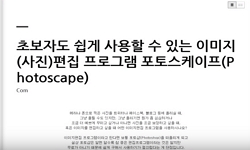This study focuses on image of ‘Little man’ & Peter the Great in Pushkin's epic poem The Bronze Horseman. This masterpiece of Pushkin holds a special place in his historical works. The poet created it at a very crucial moment in his life and caree...
http://chineseinput.net/에서 pinyin(병음)방식으로 중국어를 변환할 수 있습니다.
변환된 중국어를 복사하여 사용하시면 됩니다.
- 中文 을 입력하시려면 zhongwen을 입력하시고 space를누르시면됩니다.
- 北京 을 입력하시려면 beijing을 입력하시고 space를 누르시면 됩니다.
『청동 기마상』에 나타난 '작은 인간'과 표트르 대제의 이미지 = Image of 'Little man' & Peter the Great in 『the Bronze Horseman』
한글로보기https://www.riss.kr/link?id=A45021801
-
저자
이영범 (청주대학교 학술연구소 인문과학분과, 청주대학교 인문대학 유럽어문학부 노어노문학전공)
- 발행기관
- 학술지명
- 권호사항
-
발행연도
2005
-
작성언어
Korean
-
주제어
푸쉬킨 ; 이미지 ; 청동 기마상 ; '작은 인간' ; 표트르 대제 ; Pushkin ; Image ; The Bronze Horseman ; 'Little man' ; Peter the Great
-
KDC
001.3
-
자료형태
학술저널
-
수록면
227-242(16쪽)
- 제공처
-
0
상세조회 -
0
다운로드
부가정보
다국어 초록 (Multilingual Abstract)
This study focuses on image of ‘Little man’ & Peter the Great in Pushkin's epic poem The Bronze Horseman. This masterpiece of Pushkin holds a special place in his historical works. The poet created it at a very crucial moment in his life and career. The Bronze Horseman contains serious discourses on people (народ). Especially, Pushkin shows the interrelation between the 'little man' (who is Eugene, the hero of this work) with Peter the Great and his city.
In the opening stanzas (<ВСТУГ??ЕНИЕ>) of The Bronze Horseman the poet sings praises for the reforms made by Peter the Great and the grandeur and glory of Saint-Petersburg. As the narrative plot of the poem unfolds, the poet's position gradually changes to become critical along with his negative attitudes towards them. Eugene (Евгений), a simple common official, stands opposed to the Bronze Horseman (Peter the Great). In the culminating scene (Eugene's rebellious scene), he finally transforms into a heroic character with his great animosity towards Peter the Great, the impregnable holder of a sacred imperial spirit.
At the same time, the image of Peter the Great is both positive (he is a Tsar-reformer, and the founder of Saint-Petersburg) and negative (he is a Tsar-tyrant, who constantly threatened helpless ‘little man' rebelling against the imperial authority). Peter the Great not only acts as the historical person, but also has a specific individuality.
The history of mankind as a subject of research can possess the subjective and objective themes at once. Speaking generally, the state (collective) and an individual (person) always has a conflicting relationship between them. Therefore, the helpless ‘little man’ (people or person) often turned out to be a victim of the tyrannical power of the state. When the interests of the state or totalitarian society conflict with the aspirations and desires of an individual person, the former always appears as a victim of the powerful ideological dictation.
There is sufficient evidence to support the hypothesis that russian people, cast in the image of a helpless 'little man', Eugene, become an object of historical necessity. While the historical figure - Peter the Great - appears as a subject and an activist in history.
목차 (Table of Contents)
- Ⅰ. 서론
- Ⅱ. 예브게니와 표트르 대제(청동 기마상)의 이미지
- Ⅲ. 결론
- Ⅰ. 서론
- Ⅱ. 예브게니와 표트르 대제(청동 기마상)의 이미지
- Ⅲ. 결론
동일학술지(권/호) 다른 논문
-
- 청주대학교 인문과학연구소
- 조승래
- 2005
-
- 청주대학교 인문과학연구소
- Kim, Kwang-sup
- 2005
-
- 청주대학교 인문과학연구소
- 최병정
- 2005
-
- 청주대학교 인문과학연구소
- 朴建榮
- 2005




 RISS
RISS






